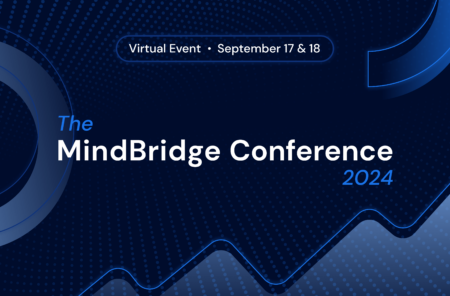You’re in the minority if you haven’t heard of artificial intelligence (AI). Yet the accounting profession has a long way to go in terms of adoption. AI is a popular conversation piece for industry bodies such as the AICPA, CPA Australia, ICAEW, and PCAOB, and more firms are deploying the technology today than ever before. But most firm leaders still struggle to understand the impacts of AI on their staff, processes, and clients.
What are the implications of AI for your audit practice in 2020?
We’ll break down the answer for two types of firms: Those that are thinking about adopting AI this year and those that are already using MindBridge Ai Auditor.
Thinking about adopting AI in 2020
Based on interviews with our clients, firms consider making the shift towards AI for the following reasons:
- We’ve heard about the value of AI from others
- We hope AI will create new opportunities to attract and grow clients
- We don’t want to be left behind
Firms are less clear on how AI transforms their client engagement process and may not understand that it’s about the people as much as the technology. Firms that are thinking about making the shift to AI need to:
- Raise their awareness and understanding of AI for audit
- Align their strategic goals on providing more value to clients through AI
- Build up their data skills and capacity to get the most out of AI
In other words, as AI and machine learning can extract anomalies in client data (i.e., potentially risky transactions in the general ledger and subledgers) that were previously unheard of, auditors need to build up their data analytics skills and consider new ways of working with clients. With AI, the focus is more on risk-based analysis and audit planning than traditional rules and statistical sampling.
This means that more data leads to more effective results. It’s wise to think about exporting samples of client financial data as early as possible. The level of detail that can be analyzed with AI is likely beyond what was included in your previous PBC requests and it may take your client a few iterations to get the exports required. We recommend getting the sample exports in advance of your fieldwork so your engagement teams can run an interim AI analysis and provide immediate value to clients as fieldwork begins. The up-front information gathered here will be useful throughout the engagement.
It’s also prudent to set realistic expectations for your firm and engagement teams if you’re starting your AI journey during busy season. Focus your first few engagements on clients that are using common ERP systems, such as QuickBooks or Dynamics, to minimize time spent on generating data exports. This enables your engagement team to spend more time interpreting and understanding the AI analysis results and delivering value to your client with AI-expanded insights.
Using AI for audit now
To best prepare for the upcoming busy season using MindBridge Ai Auditor, it’s important to consider these three actions:
Prepare your client and their data. When obtaining client data, know what you need, why you need it, and understand that more data is better. To help you prepare, our knowledge base has an overview of client data requirements, data checklists, and ERP export guides. Remember that the earlier you can get data, the better. Even if year-end data isn’t available, you can load previous year, interim data, and complete accounting mapping ahead of time.
Perform risk assessment and planning. We recommend the following steps:
- Once client data is loaded, prepare the audit plan, create the necessary tests, and save them all using the Filter Builder.
- Performing a risk assessment of your client’s data will identify the areas to test and using the dynamic audit plan will help assign tasks and facilitate testing procedures during fieldwork.
- Reviewing the analytics, ratios, and graphs with current and past data will call out any items that need to be addressed during the audit.
- Leverage the trending reports and ratios to enhance your working papers and provide additional value back to your client.
Engage our customer success team as early as possible. When interacting with your Customer Success Manager (CSM), it’s important to set clear timing expectations, including fieldwork dates. Your CSM acts like another member of your engagement team: Your busy season is their busy season. Setting them up for success early helps them be more efficient and effective in treating requests.
Need help? At any time, you can check out our knowledge base or join a live chat with a CSM using MindBridge Assist.
Remember that AI is as much about the people as it is the technology. Whether it’s your own staff, your client, or by working with our CSMs, the successful delivery of AI-based value depends entirely on putting the human at the center of the audit.
As MindBridge founder Solon Angel states:
“The purpose of AI or any new technology is to save time, headaches, and unnecessary effort on humans. Be mindful to invest these savings on your well being as the menial work becomes less burdensome—having a healthy body and mental state allows you to think with higher quality.”
Learn more about MindBridge Ai Auditor here.





